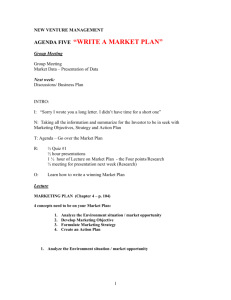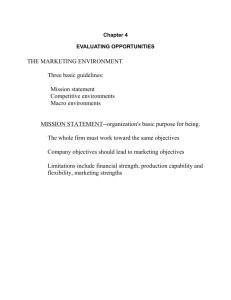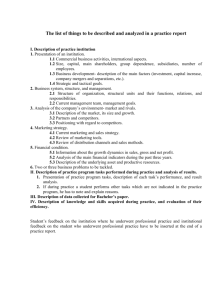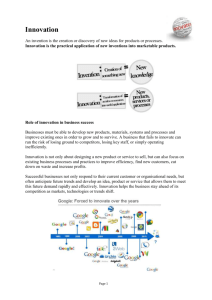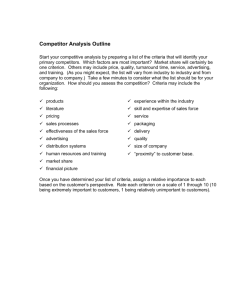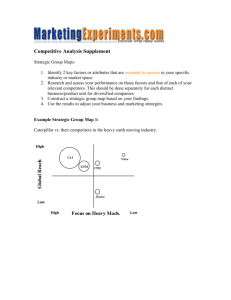Competition
advertisement
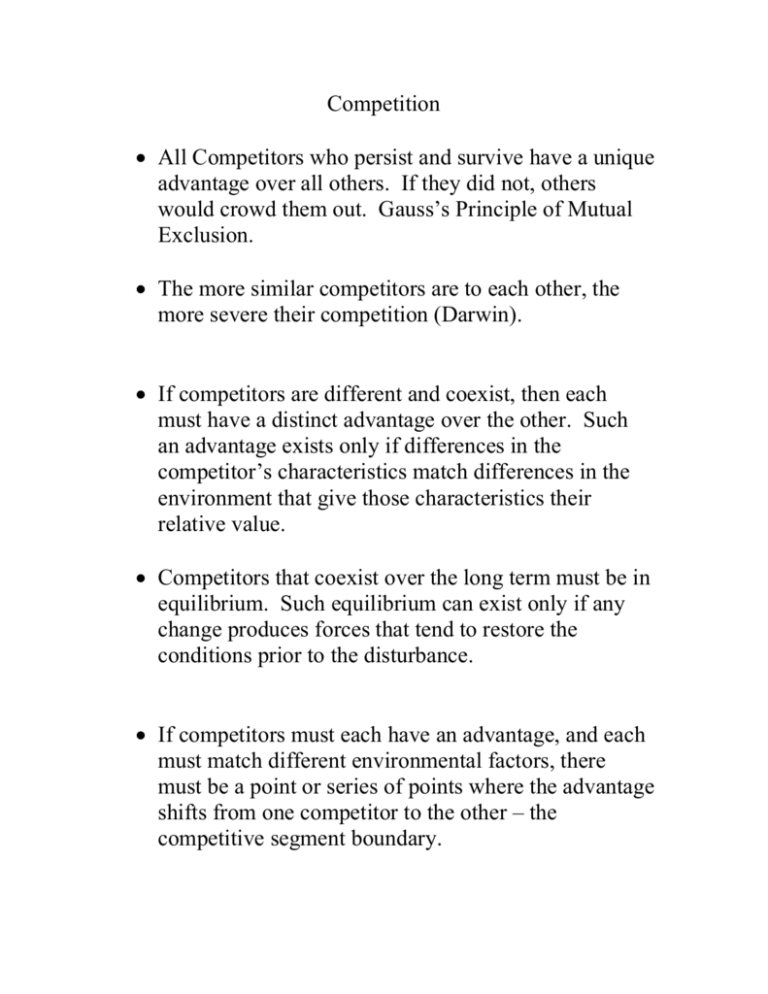
Competition All Competitors who persist and survive have a unique advantage over all others. If they did not, others would crowd them out. Gauss’s Principle of Mutual Exclusion. The more similar competitors are to each other, the more severe their competition (Darwin). If competitors are different and coexist, then each must have a distinct advantage over the other. Such an advantage exists only if differences in the competitor’s characteristics match differences in the environment that give those characteristics their relative value. Competitors that coexist over the long term must be in equilibrium. Such equilibrium can exist only if any change produces forces that tend to restore the conditions prior to the disturbance. If competitors must each have an advantage, and each must match different environmental factors, there must be a point or series of points where the advantage shifts from one competitor to the other – the competitive segment boundary. There must be as many significant variables or combinations of variables in the competitive environment as there are competitive survivors. If this were not true, it would be impossible for some competitor to find a combination of factors that would outweigh the advantages of any other and, therefore, permit survival. “Millers magic number 7, + or –2” “The rule of 4 or 5” Since each pair of competitors acts as a constraint on each other, then the equilibrium point between then constitutes a segment boundary. Failure to maintain a competitive segment and monopolize the advantage within that segment is failure to have an advantage over any competitor. The eventual consequence must be extinction. Any change in the environment changes the factor weighting of environmental characteristics and, therefore, shifts the boundaries of competitive equilibrium. Competitors who can adapt best or fastest gain an advantage from environmental change. Any change in the environment that affects any competitor will have consequences that require adaptation by all competitors merely to maintain relative position – “The Red Queen Syndrome”. Harsh, severe environments have a limited number of characteristics which outweigh all others – and a limited number of interfacing competitors. The richer and more varied the environment, the greater the number of potential competitors and the smaller the potential for advantage – and the more severe the competition. Competition begins with natural resources, converted to more specialized uses by successive trophic levels – the food chain. Each level of a trophic resource chain is dependent upon those links below it, and limited by the continuity, stability, and abundance of each link below. No one preys on the top predator, but its supply line is the most fragile. Critical competition is horizontal, within a level. Specialization of function is a prerequisite for effectiveness. Differentiation is a requirement for survival. Ecological roles are repeated in form but never in detail. DFF (Darwinian Fitness Factor) = 1.0 for stability.
